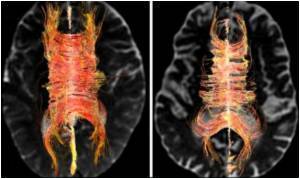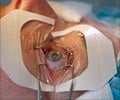
Dr Manir Ali and colleagues looked at DNA from three unrelated families. All families had members with a history of poor vision from birth, linked to problems with the eye's lens and cornea.
Together, the lens and the cornea make up the clear "window" at the front of the eye, but if these structures do not develop correctly then this "window" can become cloudy, making it difficult to see clearly, even leading to glaucoma and eventually blindness if they are not treated.
Ali and colleagues discovered that all of the various family members with impaired vision had defects in an antioxidant protein peroxidasin that makes up part of the lens and cornea, concluding that these defects are responsible for causing cataracts and glaucoma in children with this rare form of inherited eye disorders.
"We know that in healthy eyes, peroxidasin acts as a first line of defence against the damage that ultraviolet radiation and sunlight does to our skin. It may also help protect against cataracts in older people," Dr Ali said.
"Our findings imply that this same protein is essential for the normal development of the lens and surrounding structures at the front of the eye," he added.
Advertisement
Full details of the study are published in the latest issue of the American Journal of Human Genetics.
Advertisement















